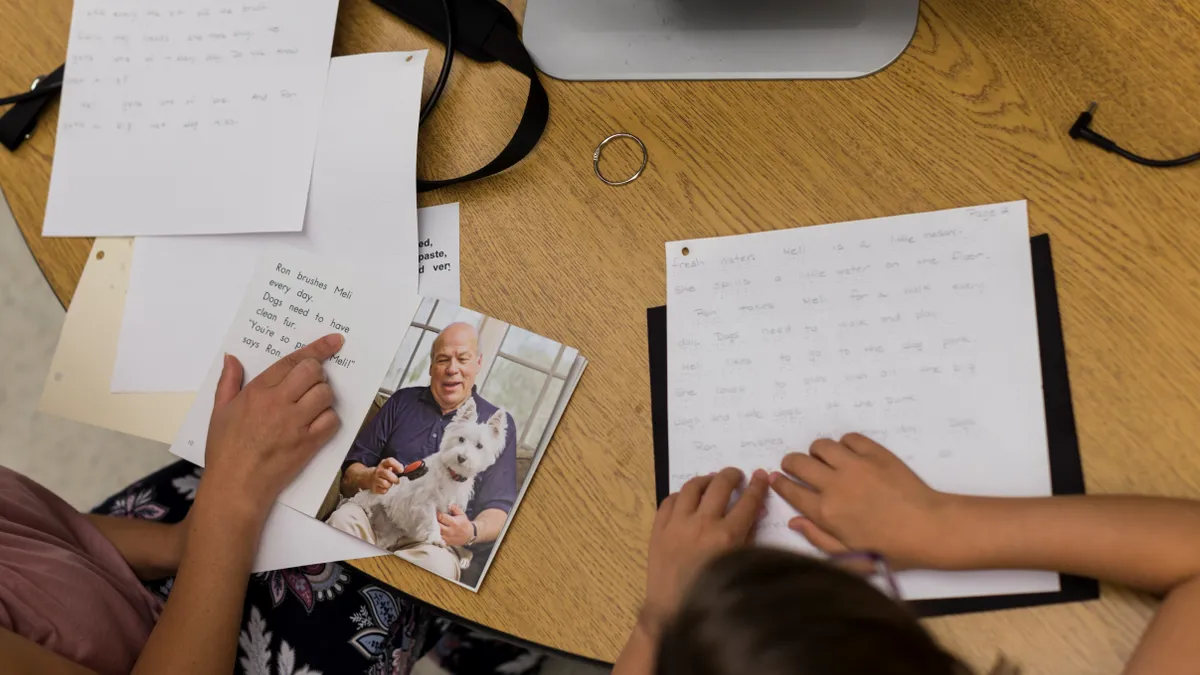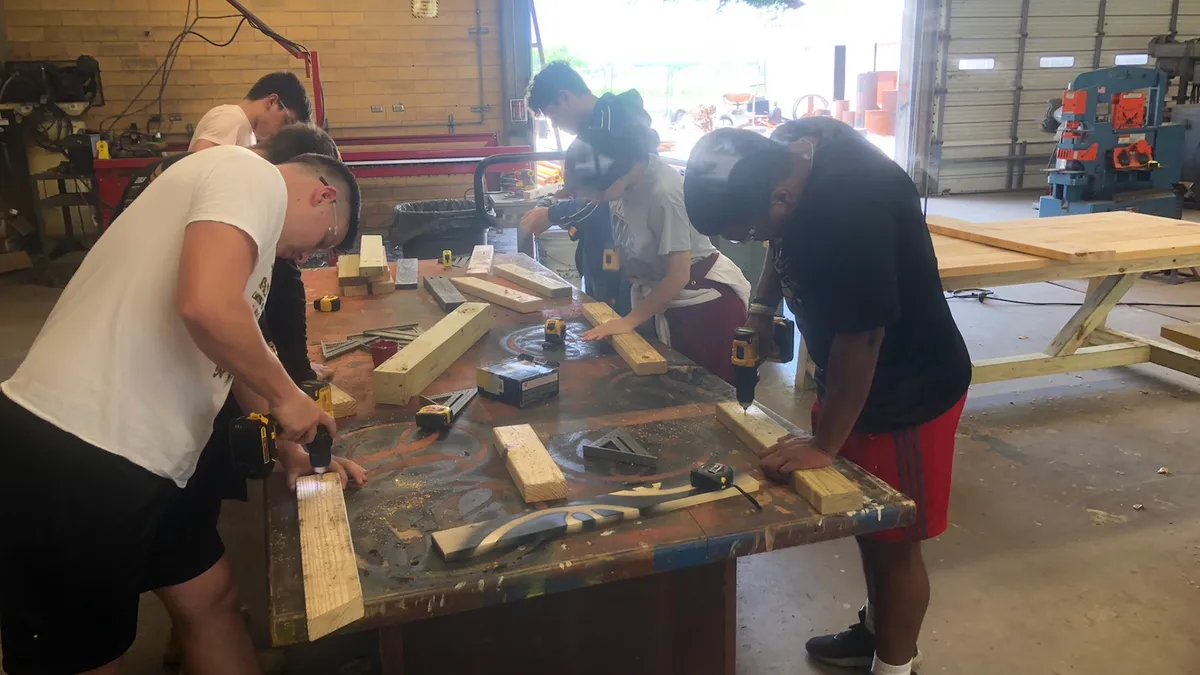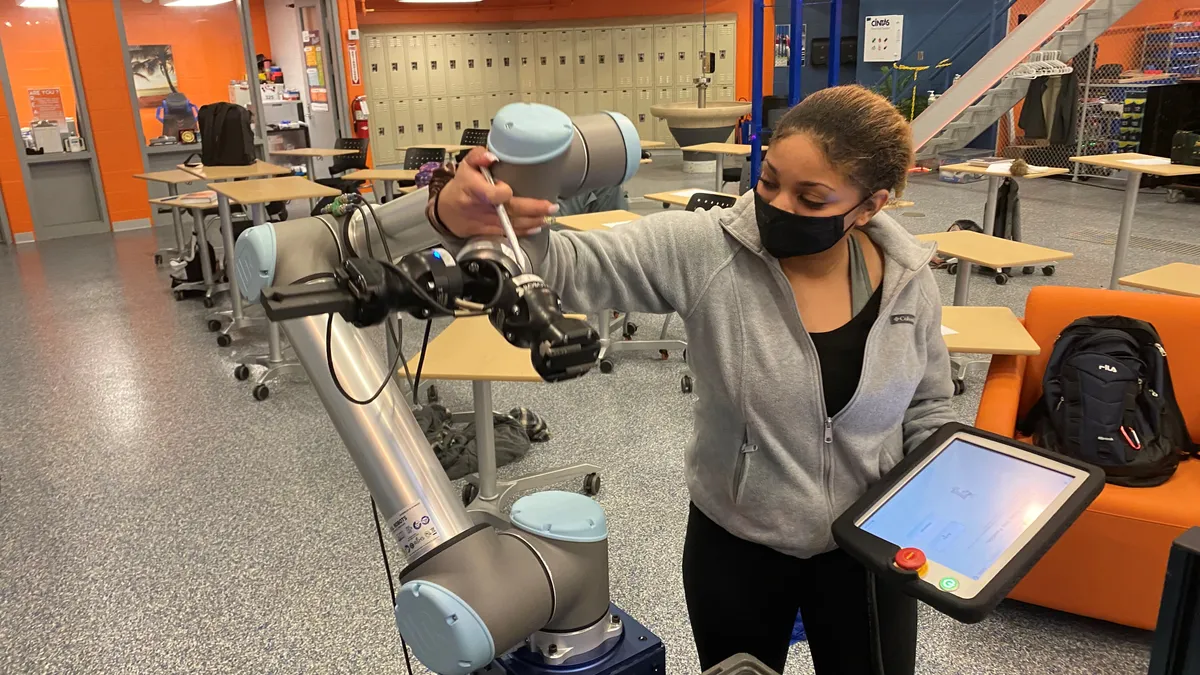The challenge: While schools have made strides in increasing the rigor and breadth of the academic content high-schoolers should be exposed to before graduation, the abundance of other skills needed to succeed in college or career — such as self-advocacy, persistence, equity awareness and critical thinking — have been harder to plan out, communicate and instruct.
For example, it’s difficult to define success, as well as figure out where these 21st Century skill gaps are in schools. The complexity of creating a cohesive high school program that meets a variety of competency goals, which may be dynamic, to help all students thrive after graduation can be overwhelming to school systems.
The approach: In 2019, the New England-based nonprofit Barr Foundation provided $2.6 million in grants to 13 communities representing 52 schools in Massachusetts, Connecticut, New Hampshire and Maine. Each grantee community had at least 50% of its student population identified as high-needs, said Jenny Curtin, senior program officer for education at the Barr Foundation.
The grants allowed schools to work with their students, parents, educators, businesses, nonprofits and other community stakeholders to develop a "Portrait of a Graduate" project, which is a vision of what that school or district wants all students to be able to know and do in their postsecondary life.
“That community-driven process not only creates some nuances in what the portraits ultimately include… but it also changes the mindset and power shifting around how they think about what's possible and what a change effort could look like going forward,” Curtin said.
For every school or district, the process was split into two phases, with the first focused on collecting community input and creating the Portrait of a Graduate vision. The second phase, where many schools are at now and where the Barr Foundation will provide another $3.4 million in grants, is focused on developing an action plan to execute the goals. The grant funding is being used to provide staff stipends, hire facilitators and project managers, and pay for community gatherings, Curtin said.
It’s complex work that is allowing schools to dig deep to examine existing programs and uncover localized and unique ways to reform high school programming, said Curtin, who added the Barr Foundation does not influence what the schools’ priorities should be.
“The point is not to make this just an aspirational vision,” Curtin said. ”It's to actually use it as a tool, a filter to inform decisions and what the learning experiences look like for students.”
Danbury High School’s approach: The western Connecticut school had a core group of 35-40 people working on this effort during the pandemic, helped by a $250,000 Barr Foundation grant. To gather community input, the school held several focus group meetings and a thought exchange for the public to write short comments about their ideal vision of a graduate. Participants could also read other people’s comments and rate them.
In the end, the school had 2,830 comments and 56,000 ratings, said Meghan Martins, Danbury High School’s associate principal for instruction.
Those comments helped the group draft, rewrite and then finalize its Portrait of a Graduate document, adopted by the school board in May. There are nearly 12,000 students in Danbury Public Schools.
“We've been talking about 21st Century skills for decades, and it is now 2021 and we're still talking about it. And so the portrait of the graduate really gave us an opportunity to intersect with the business community around employability attributes that may not be clearly capitalized,” Martins said.
The document articulates priorities for equity and diversity; public and private partnerships; the recruitment and retention of a diverse and culturally competent workforce; and more.
The work has already contributed to the planning of a career academy, opening in 2024, that will lead to pathways for industry credentialing, Martins said.
The school is also altering its English graduation requirements to allow students to take a fourth year of English related to their career path. For example, if a student is participating in an engineering career pathway, that student could choose to take a course in technical writing for engineers. Students will also now be required to take a personal finance class.
“That's why I think we were able to make as much movement as were, because we had a solid foundation with that equity policy, because we had a solid foundation with our new vision and mission statement, that everybody had an opportunity [to participate], so it was sort of an all-hands-on-deck kind of approach,” Martins said.
Springfield Public Schools’ approach: Before the Barr Foundation’s announcement of the grant program, Massachusetts' Springfield Public Schools, which has 25,000 students, was already having preliminary discussions about setting a vision of the skills important for high school graduation and beyond that could be included in the district's strategic plan. Once the district was awarded a $250,000 grant, the work took off, said Paul Foster, the district’s chief information and accountability officer.
Like Danbury High School, the district held community conversations and requested input from the public. In the 100 community conversations, the district asked two questions: What are your hopes and dreams for children growing up in Springfield, and what knowledge and skills would children need to reach those dreams?
Although there were many different answers and opinions, some common themes appeared, such as the desire for students to be exposed to financial literacy and the need for communication skills, Foster said. A facilitator was hired to help the district keep track of its progress on this project.
In September 2020, the district released a draft of its Portrait of a Graduate. About 1,400 people provided input on the draft, including 700 students. The final document, which was finished earlier this year, includes several priorities such as encouraging civic participation, like voting as an informed citizen in local and national elections; preparing students to oppose biases, discrimination and racism; and practicing essential workplace habits.
By next summer, the district hopes to have aligned an updated strategic plan with the Portrait of a Graduate.
“I think the fact that we've had this process where people have genuinely felt heard, and they see us taking steps or trying to take steps to ask them what they're saying, that’s something that's huge in terms of building a better relationship with your community, and parents and students,” Foster said.
What worked: The Barr Foundation brought the schools that were awarded grants together virtually and in-person before the pandemic to discuss the successes and struggles of their work, as well as listen to national experts. The schools in the cohort also peer-reviewed other schools’ Portraits of a Graduate, Curtin said.
The obstacles: It’s been challenging to change mindsets and avoid jumping to specific or narrow solutions. Instead, the exercise is built around thinking more broadly. “It’s organizing a vision for the real deeper reimagining of what's happening at the high school or deeper sort of opportunity to bring cohesiveness to everything that we're doing,” Curtin said.
In some cases, schools, while going through this process, have been able to make changes, such as curbing exclusionary discipline practices or altering grading practices even before they concluded their Portrait of a Graduate work.
The pandemic put a pause on this work for a few months in early 2020, but then the work resumed. In fact, participants said virtual meetings have helped schools get broader engagement. “There’s a deeper purpose and urgency and commitment to having that collective vision for the future” due to the pandemic, Curtin said.
Another challenge is helping people understand the focus on additional postsecondary competencies doesn’t mean attention is being taken away from core academic instruction, Foster said.
“What really started this process in the first place was, for us, was even if we teach our kids basic skills in reading, math, science, social studies, it's not preparing them to be successful after high school if that's all that we're doing,” he said.
What’s next: It’s expected to take the school systems about 18 months to complete the second phase of creating an action plan. Curtin said there could potentially be a phase three where the focus would be on implementation.
This is when the difficult work starts as communities try to execute their priorities, said school and district leaders.
“Now here’s this Portrait of a Graduate, this wonderful vision, but it's only a piece of paper, right?” said Foster. “We're in the part where we're building our strategic plan to actually reimagine school, so that school is a place that helps kids develop the competencies and skills in the portrait, and so this is when the hard conversations happen.”








 Dive Awards
Dive Awards










